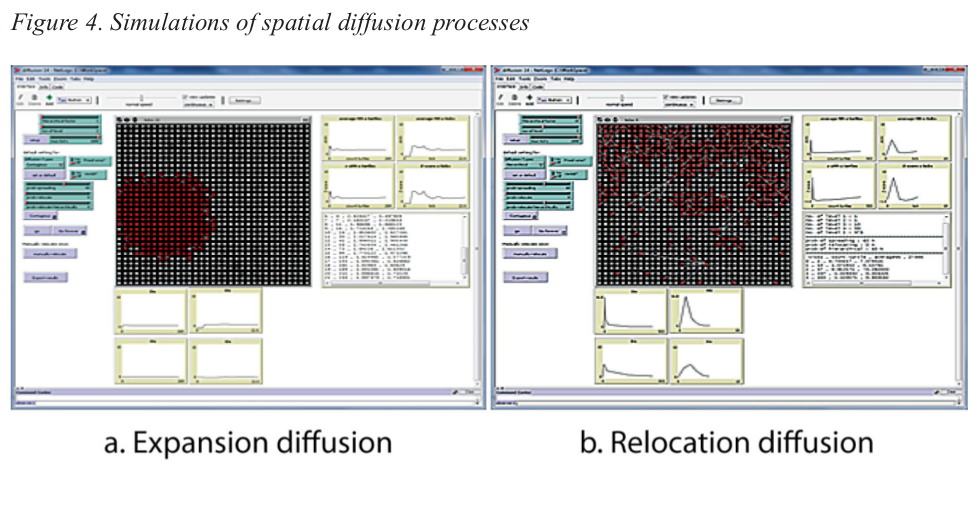
Paper
Lee, J., Lay, J. G., Chin, W. C. B., Chi, Y. L., & Hsueh, Y. H. (2014). An experiment to model spatial diffusion process with nearest neighbor analysis and regression estimation, International Journal of Applied Geospatial Research. 5(1): 1-15.
Abstract
Spatial diffusion processes can be seen in many geographic phenomena that spread or migrate across space and over time. Studies of these processes were mostly done with verbal description until Hägerstrand (1966) started to approach it with quantitative models. A variety of attempts were made to continue this effort, but only with various degrees of success. Recognizing the critical role that distances between geographic objects or events play in a spatial diffusion process, we experimented with a new approach that uses these distances to detect and distinguish different types of spatial diffusion processes. Our approach is a two-step process that first calculates nearest neighbor ratios in a point process at each time step and then applies regression curve estimation to observe how these ratios change over time. We first report the results from applying this method to three spatio-temporal data sets which show the feasibility of our approach. We then report results of randomly simulated spatial diffusion processes to see if our approach is effective for the purpose of distinguishing different types of spatial diffusion processes. With only extreme cases as exceptions, our experiment found that using estimated regression curves of nearest neighbor ratios over time is usable in classifying spatial diffusion processes to either contagious/expansion or hierarchical/relocation diffusion processes.
Read article here:
- Official website: An experiment to model spatial diffusion process with nearest neighbor analysis and regression estimation, International Journal of Applied Geospatial Research,
- ResearchGate: Abstract and full text (on request or downloadable directly),
- Please contact me (by Gmail ).
